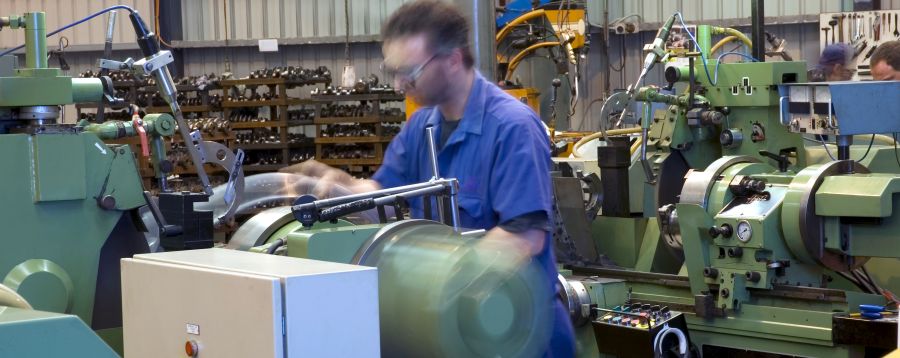
Workplace Injuries and Illnesses Decline in 2017

Private industry employers reported nearly 45,800 fewer nonfatal workplace injury and illness cases in 2017 compared to a year earlier, reports the Bureau of Labor Statistics (BLS). Approximately 2.8 million nonfatal workplace injuries and illnesses were reported by private industry employers in 2017, or 2.8 per full-time equivalent (FTE) worker.
Manufacturing Sector Shows Improvement
Among 19 private industry sectors, only manufacturing and finance / insurance experienced statistically significant changes in their overall rates of nonfatal injuries and illnesses in 2017 – each declined by 0.1 cases per 100 FTE workers compared to 2016. Manufacturing data shows workers experienced a lower injury incidence rate and fewer days away from work in 2017.
- Median days away from work was 8, one day fewer than in 2016.
- Sprains, strains, and tears was the leading type of injury in manufacturing at 34,110, unchanged from 2016. Median days away for these injuries was one day fewer than in 2016.
- Overexertion and bodily reaction cases fell by 1,690 to 32.7 cases per 10,000 FTE, compared to 34.1 in 2016.
- Musculoskeletal disorders fell 1,930 cases to 31.4 cases per 10,000 FTE, down from 32.9 in 2016. Median days away from work for MSDs was 12, two days fewer than in 2016.
Four manufacturing occupation groups accounted for 67 percent of DAFW cases in 2017:
- Other production workers, 30,210 cases (26%)
- Metal and plastic workers, 19,610 cases (17%)
- Material moving workers, 15,260 cases (13%)
- Assemblers and fabricators showed the only decrease, down 900 cases to 12,140 (11%)
In total, there were 115,550 DAFW cases in manufacturing (93 cases per 10,000 FTE), which are both unchanged from 2016, but the incidence rate of total recordable cases decreased.
Private Industry Overall
The 2017 rate of total recordable cases fell 0.1 cases per 100 FTE workers to continue a pattern of declines that, apart from 2012, occurred annually since 2004.
- Nearly one-third of nonfatal occupational injuries and illnesses resulted in days away from work.
- The median days away from work was 8 in 2017, unchanged from 2016.
- The rates for different types of cases were unchanged from a year earlier.
There were 882,730 occupational injuries and illnesses in 2017 that resulted in days away from work, essentially unchanged from 2016. The DAFW incidence rate was 89.4 cases per 10,000 full-time equivalent workers.
DAFW cases involving overexertion in lifting or lowering rose 3,250 cases to 97,990 in 2017. The rate was unchanged at 9.9 cases per 10,000 FTE workers.
The number of DAFW cases involving workers struck by objects or equipment fell 4,180 cases to 136,510 and the rate decreased to 13.8 cases per 10,000 FTE workers, down from 14.5 in 2016.
Four industry subsectors reported at least 15,000 DAFW cases in 2017 and had changes in the number of cases compared with 2016. Warehousing and storage cases increased from 2016 while the incidence rate was essentially unchanged. Hospitals, administrative and support services, and social assistance sectors showed decreases in both case counts and incidence rates for DAFW cases.
The BLS will issue a report on fatal occupational injuries later this month.

